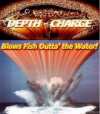A well known psychologist, Abraham Maslow, developed a theory called the “Pyramid of Needs” in order to explain why people do what they do. He refined his theory by representing it as a triangle divided in tiers.
• Survival needs are at the bottom. Food, water, and oxygen are critical for survival.
• The next need is to feel safe and secure, free from fear and threats.
• Social needs are third, the need for love and affection.
• The fourth is the need to feel fulfilled, respected and well-liked.
• On top is self-actualization, the need to develop one’s self as an individual, to make a mark on society.
Why talk about what makes people do what they do when it comes to walleye fishing? Simply this; Our most basic needs aren’t so different from other living creatures. By understanding what motivates walleyes and envisioning a walleye’s pyramid of needs, we can develop a list of key factors to help anglers catch more fish.
Walleye Pyramid of Needs
First, keep in mind we’re not saying that walleyes get depressed or are plagued with self-esteem issues. Fish do not think nor do they have emotions. Nature has programmed animals to do two things — survive and reproduce. Successful fishing comes by understanding the basic needs which make them do what they do.
The first three levels of Maslow’s Pyramid of Needs relate directly to the discussion.
The bottom of the walleye’s pyramid is the need for food, the primary motive of all living things.
Next is the need for security and comfort. Security to a fish translates to cover, such as weeds, wood and rocks. Comfort may mean locating the right combination of water clarity, oxygen and temperature or finding a current break to avoid moving water. But, if food isn’t there, walleyes won’t be there either.
To describe the top level of the walleye’s pyramid, we need only change the middle tier of the human pyramid from the need for love to the primeval urge to reproduce. This reproductive drive dominants a walleye’s behavior every spring. Nothing else matters when that time comes.
Now, we’re talking walleyes here. But, the same approach applies to any species of fish you’re after.
Food and security
That is, no matter where walleyes are located, they have a primary food source most of the time. This changes as you move from different regions of the country or even different bodies of water within the same region. But, a walleye’s main course is typically perch, shad, alewives or smelt. They also focus on newly-hatched insects or even frogs at times. Always ask yourself, what’s their main menu?
Fish and wildlife agency web sites often name the forage base in lakes and rivers. If not, make a quick phone call to the nearest DNR office. Other sources, such as Hot Spots maps, also offer forage information.
Perch are abundant in many different lakes. Perch eat other small fish, small crustaceans and insects found on the soft bottom in weeds. Vegetation also provides comfort and security.
As soon as the spawn is over, weeds are emerging, and the perch are looking for any cover they can find. The young of the year are there, too. They’ve learned to get into the weeds or get eaten. So, it’s no surprise you’ll find walleyes in the weeds much of the year where perch play a major role in the food chain.
Try casting crankbaits over the tops of weeds or pitch one-eighth ounce jigs tipped with a leech or a chunk of nightcrawler into pockets and along the edges. Focus your search on points and inside turns in the weed bed that will concentrate hungry fish.
Predator fish follow spawning shad into shallow water or feeder creeks during the spring and summer when water is 50 to 70 degrees. After laying eggs over sand and rock bars at night, huge schools of shad return to deeper water to suspend and roam vast areas in search of plankton. Walleyes are close by, and trolling is then the best tactic to catch them.
Let out enough line to run lures at various depths above the depth where you have marked walleyes with your sonar. Use Off Shore in-planer boards to spread lines out to cover more water and to get your lures away from boat noise. Vary your speed and use S-turns to make outside boards go faster and inside boards to go slower.
Alewives are a major food source for walleyes in the Great Lakes and the Missouri River system. Alewives are extremely sensitive to cold water. They migrate deep in winter to stay warm and move to mid-depths in spring and fall. Summer walleye fishing can be tough because alewives give predators a ready food source when they spawn from June through August. But, after eggs hatch, perch and a variety of minnows move to the rocks and gorge on them. Walleyes then eat the perch and minnows.
Smelt go very deep during warm months. Walleyes who feed on smelt can be caught at extreme depths of 40 to 50 feet and deeper. But, as the water cools in fall, smelt move into the bays, and that’s where you’ll find walleyes.
The buzz on insects
You can’t miss a mayfly hatch. They’re everywhere, and most anglers think it’s time to head for home when they see them at the boat landing. Not so.
Mayflies hatch in mud on lake bottoms from 15 to 30 feet down and rise to the surface, where clouds of minnows congregate to eat them. Walleyes will be near the surface eating both minnows and insects. Try trolling shallow running lures that mimic the size of the minnows or spinners tipped with nightcrawlers.
I’m not hungry
Food becomes a secondary concern when water reaches 40 to 50 degrees in spring. The drive to spawn overrules food and security. In April or May, look for spawning fish on hard-bottom flats in the northern sections of lakes, which warm first. Best locations are near the mouths of rivers and creeks that carry warm water or hard bottom, rocky areas where they spawn. Catch walleyes by pitching jigs or casting crankbaits. Troll crankbaits or spinner rigs in larger areas such as Lake Erie’s Western Basin.
Walleyes in rivers prepare to spawn by migrating upstream until they’re stopped by dams or rapids. Try vertical jigging downstream or troll upstream with three-way rigs and floating crankbaits or live bait. Trolling deep diving crankbaits with leadcore line can also be very deadly.
The Anglers’ Pyramid
Those of us who fish for walleyes can envision our own pyramid of factors that we must consider in order to catch them consistently.
Obviously, location is most important. What do the calendar period and water temperature tell us about what’s most important to walleyes at that time of year - food, security or reproduction? Where can we predict they’ll be?
Depth is critical once we see fish on the sonar. Are they on the bottom or suspended? Are they concentrated or dispersed? The answers go a long way to decide what tactics to use — trolling versus jigging, rigging, or casting crankbaits.
The third tier is action. What mood are walleyes in, lethargic or aggressive and feeding heavily? Walleyes spawn at cold temperatures, true enough. But, their metabolism is higher and they are more aggressive at higher temperatures nearer their preferred water temperature range of 65 degrees. A slow approach often works early and late in the year. But, there’s often a need for speed so don’t be afraid to crank up the speed of your troll or casting retrieve.
Color is next. Most walleye spots are busy, and fish are used to common color choices. Something different often provokes strikes when walleyes are indifferent to the ones they see all the time. Even if a certain color is hot for a while, not every walleye on a spot will want that same thing. Consider a restaurant, where some people prefer steak, and others want chicken. Color preferences change, so you should, too.
Just like color, the effectiveness of sound changes from day to day, hour to hour. Rattles in jigs or crankbaits can often become a critical factor. Don’t overlook it.
Scent is the final consideration. But, more important than adding scent to attract fish is to be sure your hands are clean so you don’t introduce adverse scent, like gasoline, that might repel them.
The walleye’s pyramid: food, security, reproduction. The angler’s pyramid: location, depth, action, color, sound and scent.
Consider the pyramids, match them up, and you just might find yourself realizing your dreams with limits of big walleyes.
|







